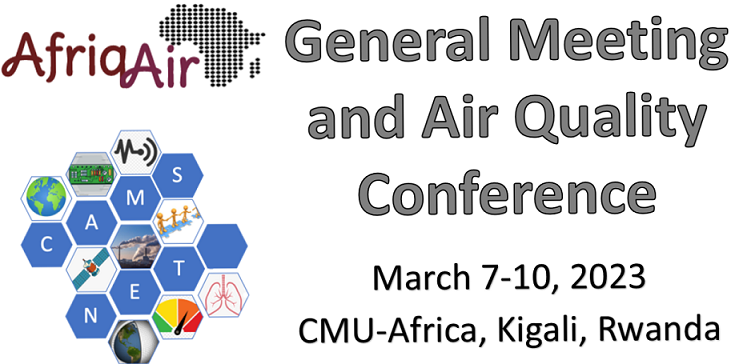Speaker
Description
Background: Fine particulate matter (PM2.5) has been recommended as the best measure of air quality. We assessed the spatio-temporal trends of air quality based on PM2.5 concentrations in Kampala City.
Methods: PM2.5 concentrations generated by 25 Clarity Node Solar-Powered monitors from January 1, 2020–June 30, 2022 were abstracted from the Clarity dashboard. We computed 24-hour average PM2.5 concentration at city and division levels. Average PM2.5 concentrations were compared by hour of the day to understand the variations in air quality throughout the day. Seasonal Mann-Kendall statistical test was applied to assess the trend of 24-hour average PM2.5 concentrations.
Results: Overall, the 24-hour average PM2.5 from January 1, 2020–June 30, 2022 was 59 µg/m3 (range: 18–182 µg/m3) in Kampala City. High PM2.5 concentrations were observed in all divisions of the city: Kawempe (63 µg/m3), Central (61 µg/m3), Rubaga (60 µg/m3), Nakawa (55 µg/m3) and Makindye (52.7 µg/m3). Two PM2.5 concentration peaks were observed from 10am–midday (73.2–72.9 µg/m3) and 8pm–9pm (73.3–77 µg/m3). There was a negligible but significant decreasing trend from January 2020 to June 2022 (r = -0.27, p < 0.001). PM2.5 increased during April–June throughout all evaluation years [2020 (r=0.56, p=0.006), 2021 (r=0.26, p=0.030), and 2022 (r=0.37, p=0.030)]. Significant decreasing trends were observed during July−September, 2021 (r=-0.43, p=0.008) and January−March, 2022 (r=-0.41, p=0.011).
Conclusion: Unhealthy air quality evidenced by PM2.5 concentrations exceeding the WHO targeted “safe” level was observed even during times of less traffic and economic activities in Kampala City.

